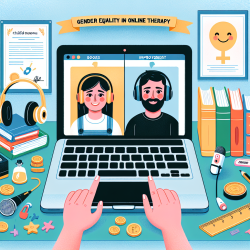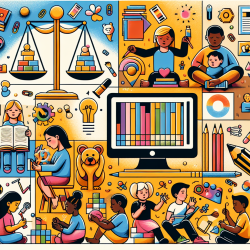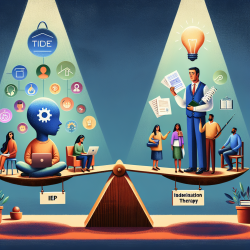Introduction
In the realm of online therapy services for schools, creating an inclusive and equitable environment is paramount for fostering positive outcomes for children. The research article "Addressing the Horizontal Gender Division of Labor: A Case Study of Support and Obstacles in a Heavy Industry Plant in Iceland" offers valuable insights into the challenges and strategies for achieving gender equality in the workplace. By understanding and applying these findings, practitioners in the field of speech-language pathology can enhance their skills and improve therapy outcomes for children.
Understanding the Research
The study conducted at Metalicorp, a heavy industry plant in Iceland, aimed to achieve gender equality by hiring an equal number of women and men. Despite receiving national and international recognition for their efforts, the plant faced significant challenges in reaching their 50/50 target. The research highlighted several key factors that hindered progress, including persistent gender stereotypes, traditional views on gender roles, and workplace culture.
One of the main findings was that gender stereotypes outside the plant played a significant role in preventing equal gender representation. These stereotypes often associated competence and status with men, making it difficult for women to enter traditionally male-dominated fields. The research also emphasized the importance of challenging the male-dominated workplace culture to eliminate horizontal gender segregation effectively.
Applying Research Insights to Online Therapy
For practitioners in speech-language pathology, the insights from this research can be instrumental in creating a more inclusive and effective online therapy environment. Here are some strategies to consider:
- Challenge Stereotypes: Encourage a culture that challenges traditional gender roles and stereotypes. Promote the idea that both men and women can excel in any field, including speech-language pathology.
- Inclusive Practices: Implement inclusive practices that ensure equal opportunities for all genders. This can include diverse representation in therapy materials and activities that reflect a wide range of experiences and perspectives.
- Workplace Culture: Foster a supportive and equitable workplace culture by addressing any existing biases or discriminatory practices. Encourage open dialogue and provide training to raise awareness about gender equality.
- Role Models: Highlight successful practitioners from diverse backgrounds as role models for children. This can inspire and motivate children to pursue their interests and talents, regardless of gender.
Encouraging Further Research
While the research conducted at Metalicorp provides valuable insights, it also underscores the need for continued research in the field of gender equality and its impact on workplace dynamics. Practitioners in speech-language pathology can contribute to this ongoing research by documenting their experiences and sharing best practices for creating inclusive therapy environments.
By engaging in further research, practitioners can help identify additional barriers to gender equality and develop innovative strategies to overcome them. This not only benefits the field of speech-language pathology but also contributes to broader efforts to achieve gender equality in various professional settings.
Conclusion
The research on gender equality at Metalicorp offers valuable lessons for practitioners in speech-language pathology. By challenging stereotypes, fostering an inclusive workplace culture, and encouraging further research, practitioners can enhance their skills and improve therapy outcomes for children. Embracing these strategies will not only benefit the field but also contribute to creating a more equitable and inclusive society.
To read the original research paper, please follow this link: Addressing the Horizontal Gender Division of Labor: A Case Study of Support and Obstacles in a Heavy Industry Plant in Iceland.










